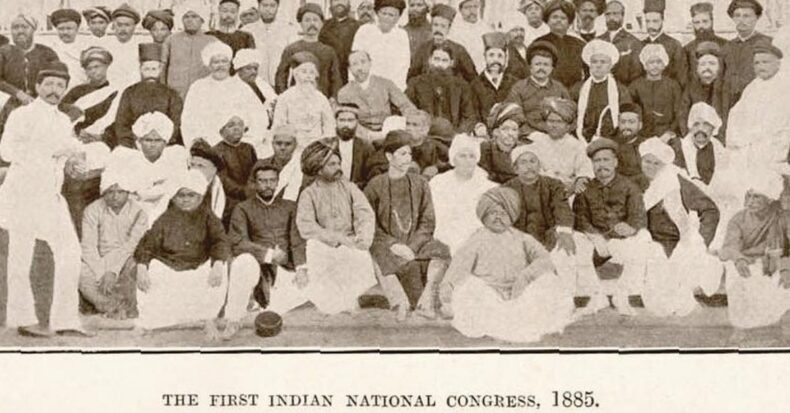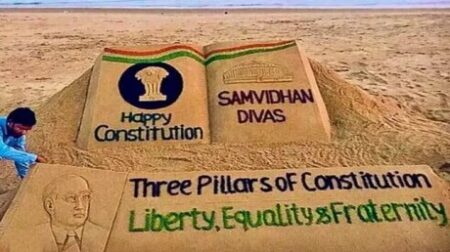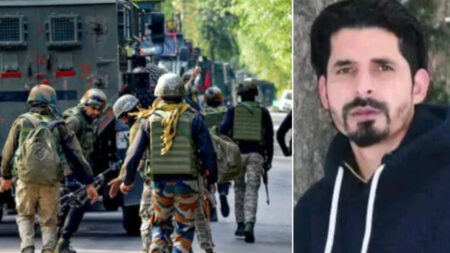The Congress’s fall from grace has fascinated many. With the Bharatiya Janata Party snatching its crown, the Indian National Congress is left to grapple with its failure to hold political power in this country of a billion people.
The history of the Indian National Congress is a very colorful one. School-going children studied it in their history and political science textbooks as the oldest political party in India.
Its prominent leaders are still a subject of interest for a lot of academicians and the media. The Congress gave us our first prime minister as well as our first female prime minister.
By being the most significant force behind securing India’s independence, the Congress had made a place in history as a powerful flag bearer of the progressive soul of India.
So, where did it all go wrong? The Congress’s fall from grace has fascinated many.
With the Bharatiya Janata Party snatching its crown, the Indian National Congress is left to grapple with its failure to hold political power in this country of a billion people.
ORIGIN
The Congress was founded in 1885 during the British colonial rule by Indian and British members of the Theosophical society. The main objective of the party was to acquire a greater share in the government for educated Indians.
The first session of the Indian National Congress took place from 28-30 December 1885 in Bombay. The Congress became more active and became an integral part of the Indian independence movement as the years passed.
1907: THE SPLIT
The party split into two factions in 1907, namely, the Garam Dal under Bal Gangadhar Tilak and the Naram Dal under Gopal Krishna Gokhale. The names of the two factions reflected the attitudes of the two leaders towards British rule.
The Naram Dal helped the British during World War I (1914-1918) in its war efforts. The Garam Dal led by Tilak, meanwhile, started the Home Rule League agitation in 1917.
The influence of Bal Gangadhar Tilak reached far and wide as he led the Congress to become the first integrated mass organization in India and brought together millions of people under British rule.
1915: THE ADVENT OF GANDHI
Mahatma Gandhi arrived from South Africa and became the President of the Congress with the help of the Naram Dal. The era of Gandhi in Congress politics was all about passive resistance to the British, which started with the Satyagraha movement.
Leaders like Jawaharlal Nehru, Sardar Vallabh Bhai Patel, Maulana Abul Kalam Azad, and more became prominent in the party. Gandhi’s policies aimed to eradicate caste-based differences, led him to popularity and made the Congress a dominant force to be reckoned with.
1929: INDEPENDENCE
The party decided to launch the Civil Disobedience Movement and adopted Poorna Swaraj as its goal in the Lahore Session of the Congress in 1929 under the presidency of Jawaharlal Nehru.
The Congress was undoubtedly the most robust revolutionary political organization in India during the Quit India Movement, but it also separated itself from the movement within a few days.
1947: NEHRU AS PRIME MINISTER
The Congress was all-powerful for thirty years post-independence. The Indian National Congress, led by Nehru, was crucial during the time of independence and handling the chaos after the partition of India.
Jawaharlal Nehru remained the only iconic leader of the Congress after the deaths of Mahatma Gandhi in 1948 and Sardar Patel in1950. Nehru led Congress to a majority win in 1957 and 1962.
1964: RISE OF INDIRA GANDHI
After Nehru died in 1964, Lal Bahadur Sastri took his place as prime minister until his death in 1966. Indira Gandhi took over after Sastri’s death leaving behind Morarji Desai.
In the midterm parliamentary election of 1875, Indira Gandhi had a landslide victory with the promise of policies to eradicate poverty using slogans like ‘garibi hatao’.
1975: EMERGENCY
The Allahabad High Court, in12 June 1975, declared that Gandhi’s election to the Lok Sabha was void on the grounds of electoral malpractice.
In response to increasing lawlessness and disorder in the country, she suggested the then-president Fakhruddin Ali Ahmed declare a state of emergency, which he did on 25 June 1975.
After the emergency was lifted, Congress lost in the subsequent election, and the Janata Party gained power. As the federation government fell apart in two years, the Congress regained its lost control in 1980, and Indira Gandhi returned as prime minister.
1984: INDIRA GANDHI’S ASSASINATION
Indira Gandhi was assassinated in 1984, and her son Rajiv Gandhi took over as the Congress leader. He led the party to victory in the 1984 elections but lost in the 1989 elections to the Janata Dal.
During the election campaign in1991, the LTTE assassinated Gandhi, following which PV Narasimha Rao became the Congress leader and eventually became Prime Minister.
SONIA GANDHI AND THE SUBSEQUENT GENERAL ELECTIONS
With a dismal performance in the 1998 elections, Sonia Gandhi was urged to take up leadership.
The party somehow managed to stay afloat until the 2014 elections where the BJP led NDA government came to power, and the Congress won 44 seats. This was its lowest ever performance in any general election.
WHAT WENT WRONG
The Congress under Nehru had a broad spectrum of different ideologies with ideological shades of the right-centre-left. It gave no leeway to political parties of the left and right orientation to spread wings.
There was an equilibrium in the party with no significant opposition to challenge its supremacy. Indira Gandhi’s tough fight with the right leadership in the Congress and her subsequent expulsion led the way for the centre to left policies, and she became one of the most popular political leaders of her time.
Although the position of the party had weakened, Gandhi managed to keep up the single-party dominance of the Congress.
As of today, Congress seems to be in terminal decline. One of the main reasons for this is weak central leadership. The party currently has no strong leader and workable structure and its ideology of leftist-welfare policies for the poor, which the BJP has taken.
The BJP is cleverly positioning itself as the sole dominant party in Indian politics. To counter the BJP surge in the country, Congress needs to write its ideological agenda differently and open up for leaders with rightist views within its spectrum of secular politics.
The party has to rebuild its organization and bring in people at the grassroots level. Setting up realistic goals for a rebound in the distant future is also necessary.













